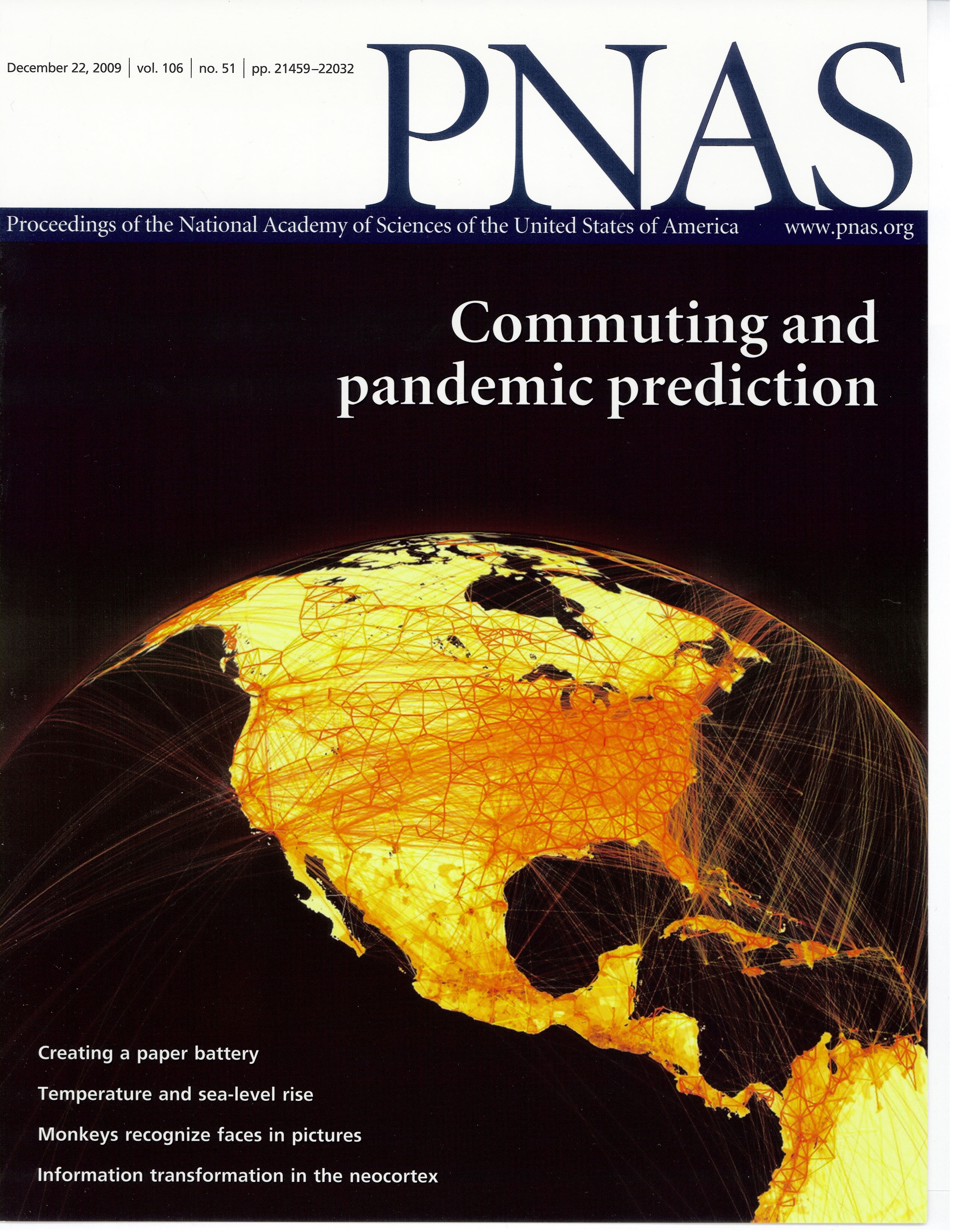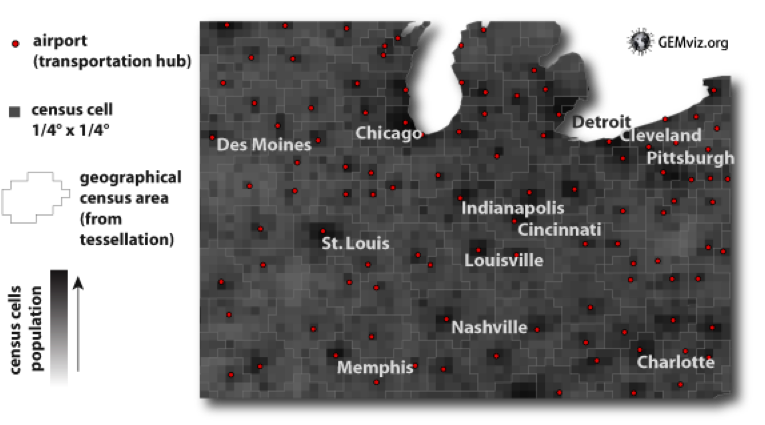Epidemic spreading & forecasting

|

|

Basic geographical structure of GLEaM |
One of the most important applications of network theory is the realistic modeling of disease spreading. We live
in a geographically extended world. In addition, the structure of a single individual local social interactions can be quite
intricate. These individual social networks can be seen as the basic components of a much more complicated (multiscale) system
that goes all the way up to relations between groups of people, between different cities and between different countries and societies.
This is the type of structure that information, fashions and even diseases exploit to propagate. In the particular case of diseases, specially
for influenza-like illnesses (ILI), in order to model (predict) their pattern of propagation in a realistic way a good knowledge of the
population mobility and traveling habits becomes of vital importance: From the local daily commuting from home to work to the intercontinental flights.
My research in this area can be framed within the GLEaM project. GLEaM is a GLobal Epidemic and Mobility modeler that incorporating data about population levels, daily commuting patterns and flights is able to generate realistic
simulations of the propagation patterns of ILI's. Some of our recent publications (see the publication list for pdfs):
- Human Mobility Networks, Travel Restrictions, and the
Global Spread of 2009 H1N1 Pandemic
Paolo Bajardi, Chiara Poletto, José J. Ramasco, Michele Tizzoni, Vittoria Colizza
and Alessandro Vespignani
PLoS ONE 6, e16591 (2011).
- Modeling the spatial spread of infectious diseases: the GLobal Epidemic and Mobility computational model
Duygu Balcan, Bruno Gonçalves, Hao Hu, José J. Ramasco, Vittoria Colizza and Alessandro Vespignani
Journal of Computational Science 1, 132 (2010).
- Comparing large-scale computational approaches to epidemic modeling: agent-based versus structured metapopulation models
Marco Ajelli, Bruno Gonçalves, Duygu Balcan, Vittoria Colizza, Hao Hu, José J. Ramasco, Stefano Merler and Alessandro Vespignani
BMC Infectious Diseases 10, 190 (2010).
- Modeling vaccination campaigns and the Fall/Winter 2009
activity of the new A(H1N1) influenza in the Northern
Hemisphere
Paolo Bajardi, Chiara Poletto, Duygu Balcan, Hao Hu, Bruno Gonçalves, José J Ramasco, Daniela Paolotti, Nicola Perra, Michele Tizzoni, Wouter Van den Broeck, Vittoria Colizza and Alessandro Vespignani
Emerging Health Threats Journal 2:e11 (2009).
- Seasonal transmission potential and activity peaks of the new influenza A(H1N1): a Monte Carlo likelihood analysis based on human mobility
Duygu Balcan, Hao Hu, Bruno Gonçalves, Paolo Bajardi, Chiara Poletto, José J Ramasco, Daniela Paolotti, Nicola Perra, Michele Tizzoni, Wouter Van den Broeck, Vittoria Colizza and Alessandro Vespignani
BMC Medicine 7, 45 (2009).
- Multiscale mobility networks and the large scale spreading of infectious diseases
Duygu Balcan, Vittoria Colizza, Bruno Gonçalves, Hao Hu, José J. Ramasco and Alessandro Vespignani
Proceedings of the National Academy of Sciences (USA) 106, 21484 (2009).
Back


